What is Decentralized Finance?
DeFi is an abbreviation for the term “Decentralized Finance,” which refers to a suite of financial services available on a public blockchain such as Ethereum (ETH).
The Long Definition
Decentralized finance, or DeFi, refers to a suite of financial services and applications built on public blockchains. The goal of DeFi is to create a new financial system that is decentralized, open to everyone, and runs on automated code based on cryptography, blockchain technology, and smart contracts.
In essence, DeFi is the financial system being rebuilt on software rather than middlemen.
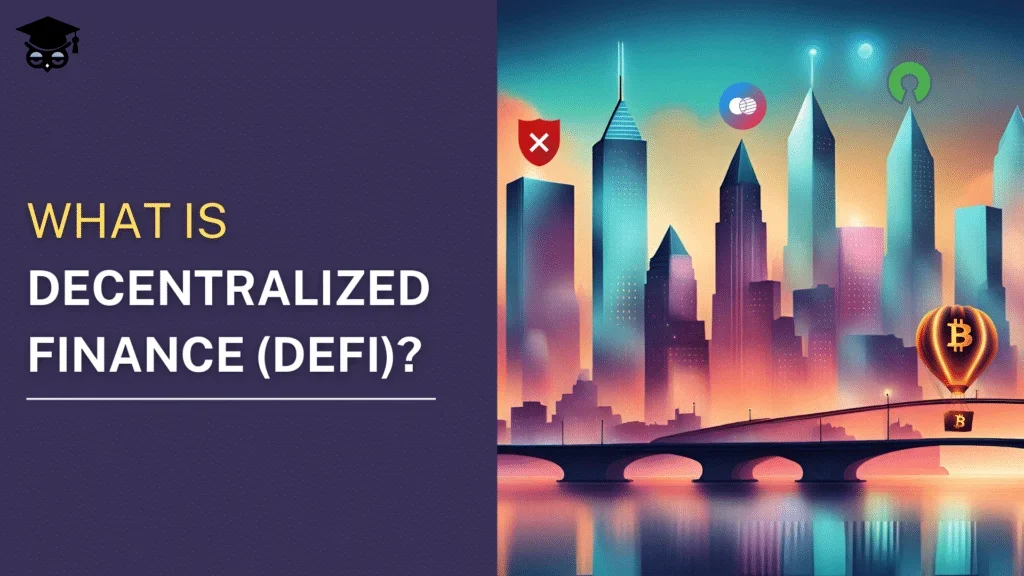
History of Decentralized Finance
One may argue that the foundations of DeFi were set with the launch of the Bitcoin blockchain in 2009. However, its actual beginnings date back to 2014, when Vitalik Buterin began developing his idea of a blockchain.
His conceptualization was different, much more advanced than what had already been done with Bitcoin. This new blockchain wouldn’t only be a way to verify and record crypto transactions; it would also be capable of running more complex applications and functions.
This idea is what would become the Ethereum blockchain. It launched in 2015 and introduced smart contracts, self-executing agreements written in code. Smart contracts are at the heart of every DeFi application.
It wasn’t until late 2017 that the DeFi space began to blossom. With the launch of MakerDAO and its stablecoin, DAI, along with their subsequent rise in popularity, the DeFi revolution officially began. Since then, many new protocols and applications have been launched on Ethereum. Notable examples include Uniswap, Aave, and Compound.
More blockchains with smart contract support have also been created and launched, providing a wider platform for DeFi. These include Binance Smart Chain (BSC), Cardano, Polkadot, and Solana.
Today, the total value locked (TVL) in DeFi protocols is well into the billions, and activity within the space is still growing. By giving users permissionless access to funds using secure code, DeFi is ready to replace traditional finance and redefine how we interact with financial markets.
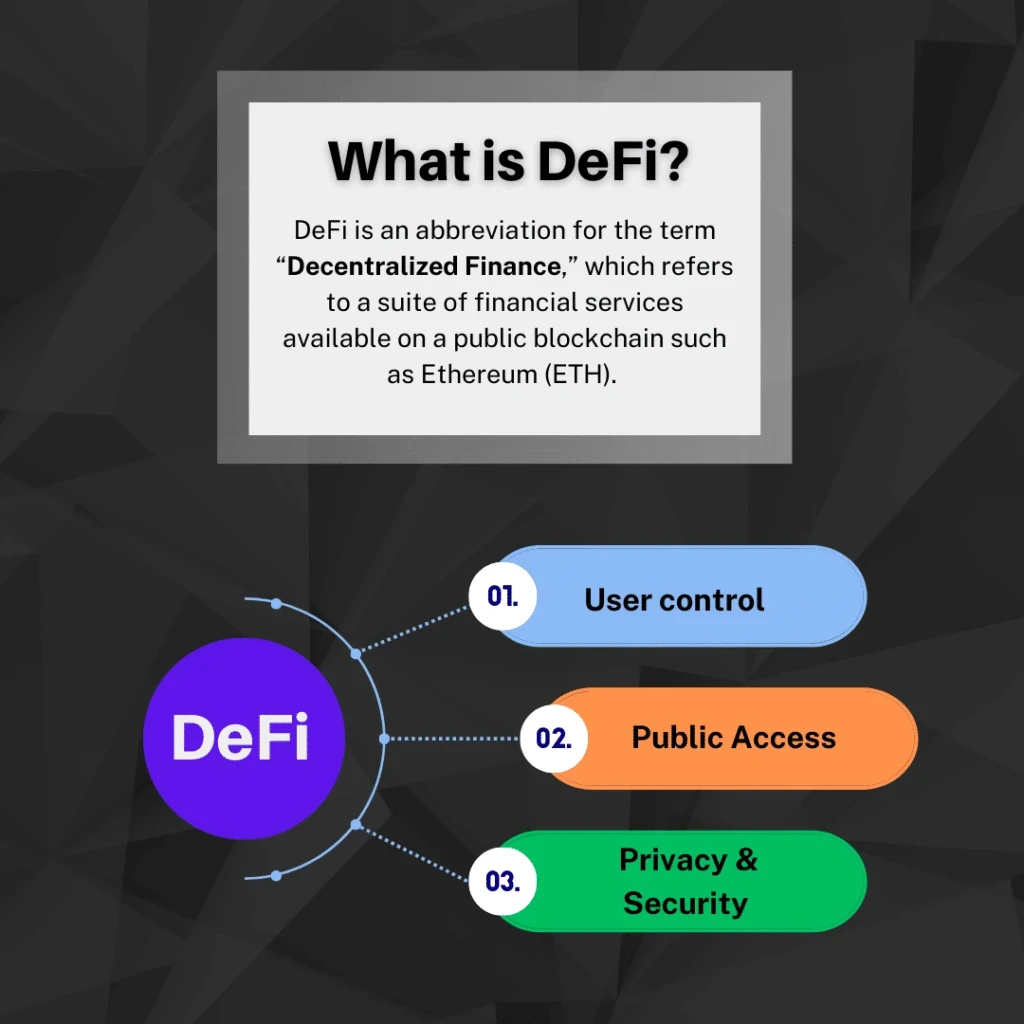
How Does it Work?
DeFi services need more complex rules and code to execute. They typically run on dApps (Decentralized Applications) using smart contract technology. These will feel like any other traditional application on the surface, but underneath, they’re built on blockchain and distributed ledger systems.
Some of the most common DeFi applications you may have heard of include MetaMask, UniSwap, AAVE, or Curve Finance. These all vary in function, some giving you the ability to store crypto in your wallet while others give you the ability to trade and earn interest on your holdings.
We will go through some of the functions and services available with DeFi and the most popular protocols in the paragraphs below.
Decentralized Exchanges (DEXs)
Decentralized Exchanges (DEXs) allow you to trade coins without using centralized exchanges such as Binance. These are entirely Peer-to-Peer (P2P), which means that there is nobody in-between the buyer and seller of the tokens. Some popular DEX examples include UniSwap, PancakeSwap, and SushiSwap.
Decentralized Money Markets
Decentralized Money Markets give you access to similar services that traditional banks or financial institutions offer clients. One example is the ability to borrow or lend money through dApps such as Compound. These allow you to borrow against your cryptocurrency as collateral while automating the management of loan terms on the blockchain.
Decentralized Stablecoins
For these protocols to function effectively, a stable currency for trading is essential. While Ether and other cryptocurrencies are available, having access to stablecoins that don’t experience significant price fluctuations is crucial for both traders and borrowers/lenders
The solution is developing cryptocurrencies pegged to fiat prices, the most popular being the US dollar. This means that a stablecoin’s value should always be equal to one dollar, for example. Popular examples are USDC, USDT, and BUSD, which are all pegged to the price of USD.
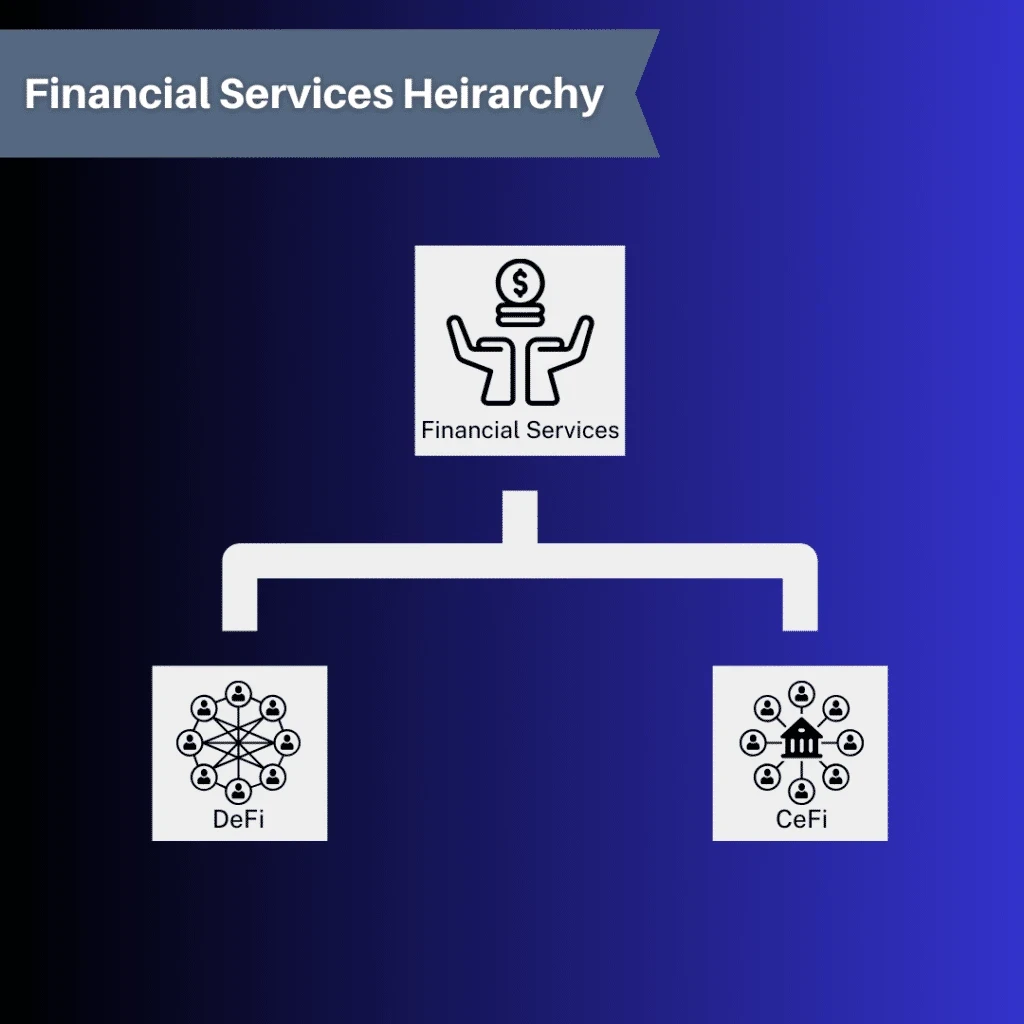
DeFi vs CeFi
Financial services can be split into two main categories depending on where control is centered. One of these is DeFi, which we have already covered. The other is centralized finance (CeFi).
CeFi is the traditional form of finance. Almost all the financial institutions you’re used to and interact with often; banks, lending institutions, hedge funds, exchanges, etc. – fall under this category.
You might be wondering, what sets DeFi apart from CeFi?
Well, centralized finance, as in the name, is centralized. It is reliant on central authorities to oversee and provide financial services. These authorities have majority, or in some cases, absolute control over the system and its applications.
In DeFi, no single entity has such control. Financial applications are built on decentralized protocols, where control is distributed over the participants. Unlike in CeFi, nobody has absolute control over the system and its applications.
As a result, decentralized applications are often seen as more trustless and transparent than centralized alternatives.
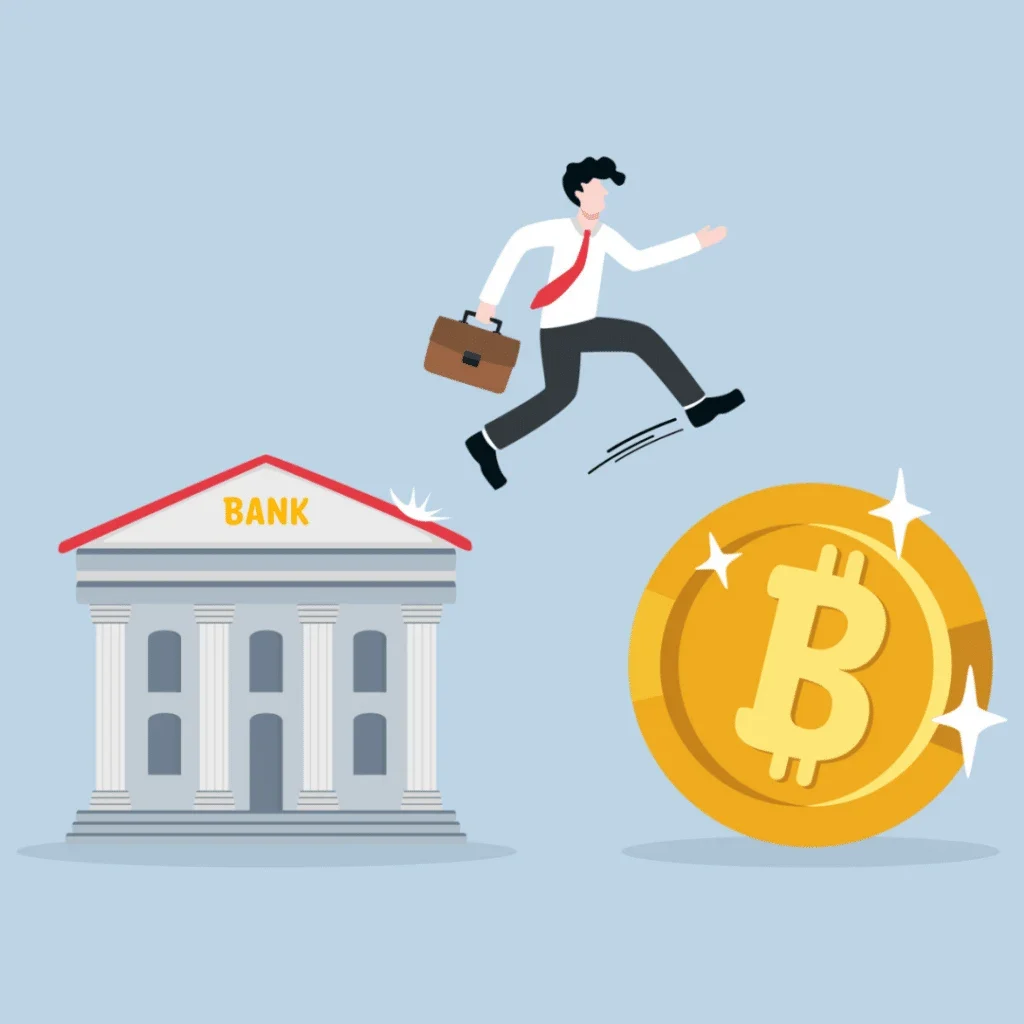
Why is DeFi important?
DeFi proponents argue that it offers users a high degree of control over their finances. Moreover, DeFi is built on public blockchains, so it is available to anyone with an Internet connection. This makes it accessible to a global audience, even to users in remote locations, where banks have traditionally been unable to reach and serve. This is one of the key reasons why DeFi is so essential.
As the DeFi ecosystem grows, we will likely see more innovative applications emerge. Many experts agree that it has the potential to disrupt traditional finance (TradFi).
DeFi will likely not replace TradFi. However, at the very least, it will force traditional financial institutions to reconsider and improve their processes. Many financial institutions around the world are already exploring how to integrate blockchain technology.
Popular DeFi Protocols
MakerDAO
MakerDAO is a decentralized autonomous organization that created and managed the DAI stablecoin on the Ethereum blockchain. DAI is pegged to the US Dollar, meaning its value remains stable even when the prices of other cryptocurrencies fluctuate.
The protocol allows users to collateralize their cryptocurrency tokens to generate DAI. This process is called collateralized debt position (CDP), so once a token is collateralized, the user can generate DAI up to a certain loan-to-value ratio (LTV).
Additionally, users are incentivized to keep the stablecoin at $1 by being penalized fees if the coin drops below this amount. In this way, MakerDAO can maintain the stability of DAI while also providing a decentralized platform for borrowing and lending.
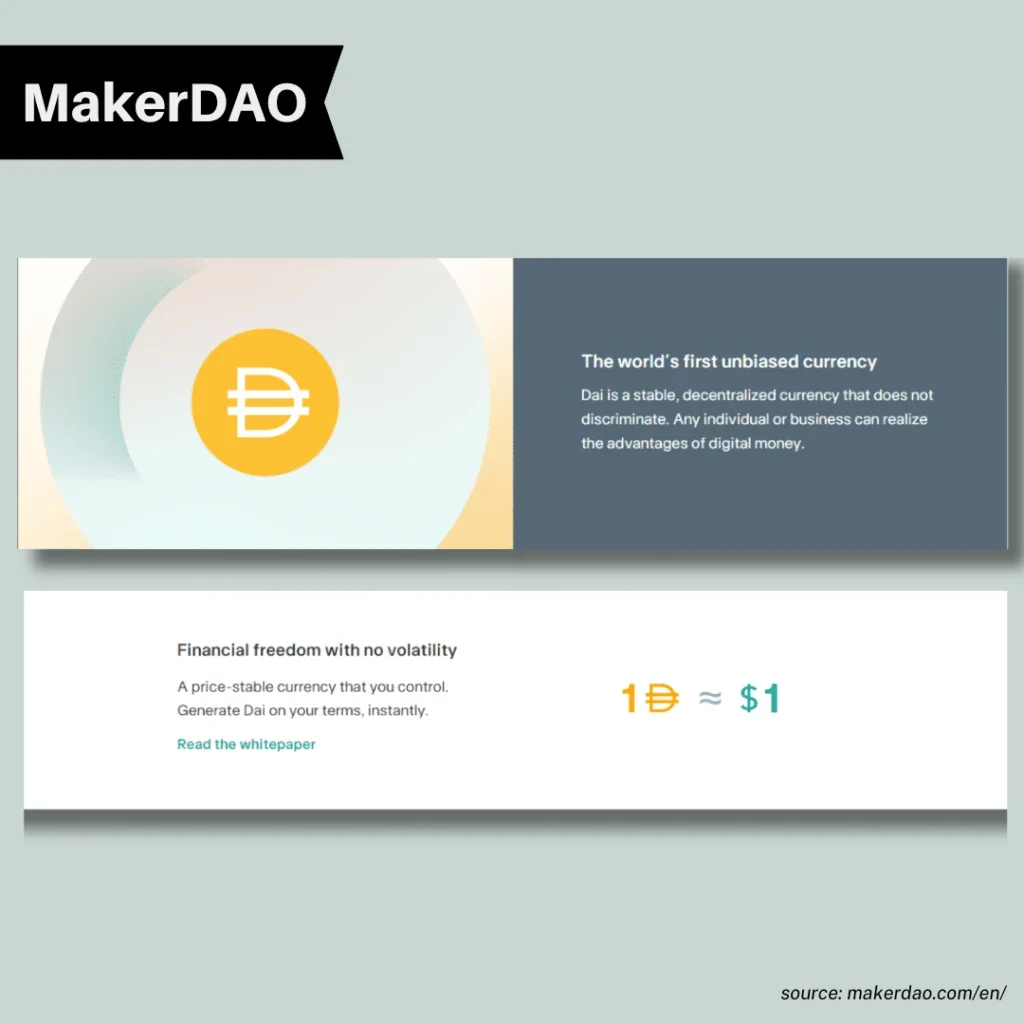
Uniswap
UniSwap is a decentralized exchange (DEX) that allows users to trade Ethereum-based tokens efficiently. The platform uses a smart contract that automatically matches buyers and sellers.
This makes UniSwap much easier to use than traditional exchanges, which often require users to create accounts, deposit funds, and place orders.
AAVE
AAVE is a decentralized finance protocol that allows users to deposit and borrow cryptocurrencies. It uses a system of collateralized loans provided by other users who earn interest, which helps provide liquidity.
The popular protocol also offers several features that make it unique, including flash loans and credit delegation. Flash loans allow users to borrow funds without having to put up collateral, while credit delegation will enable users to delegate their creditworthiness to another user.
The AAVE protocol is a powerful tool for users who want to maximize their returns on investment in the cryptocurrency markets.

Compound Finance
Compound Finance is a DeFi protocol that allows users to earn interest on their cryptocurrency holdings or borrow against them to generate short-term liquidity. Using an algorithm, the protocol bases interest rates on supply and demand, giving users more competitive rates than traditional institutions.
You can also collateralize loans with multiple cryptocurrencies, providing greater flexibility and lending options. The protocol features a simple interface, making it easy to use, and a versatile DeFi protocol with better interest rates and a wide range of lending options.

DeFi Risks
The technology around DeFi is still in its infancy. Thus, the space carries a considerable amount of risk.
For example, DeFi protocols are prone to security breaches. Hackers have, over the years, managed to steal large amounts of money from DeFi applications. Notable examples include Ronin Network, where more than $600 million was stolen, and Wormhole, which was hacked for more than $300 million.
The DeFi space also features its fair share of scammers. With little in the way of regulations, scammers have found ways to cheat people out of their hard-earned money. Fortunately, regulators around the world are becoming increasingly keen on the space and are developing laws to regulate cryptocurrencies and crypto projects and, thus, protect consumers.
Still, you have a part to play in ensuring your safety in DeFi. For one, make sure you only invest with amounts you’re comfortable with losing. You should also make sure to understand the protocol you’re using.
Check the reputation of the team behind the project and double-check the market cap of coins. A larger market cap typically indicates trustworthiness since more traders are on board.
